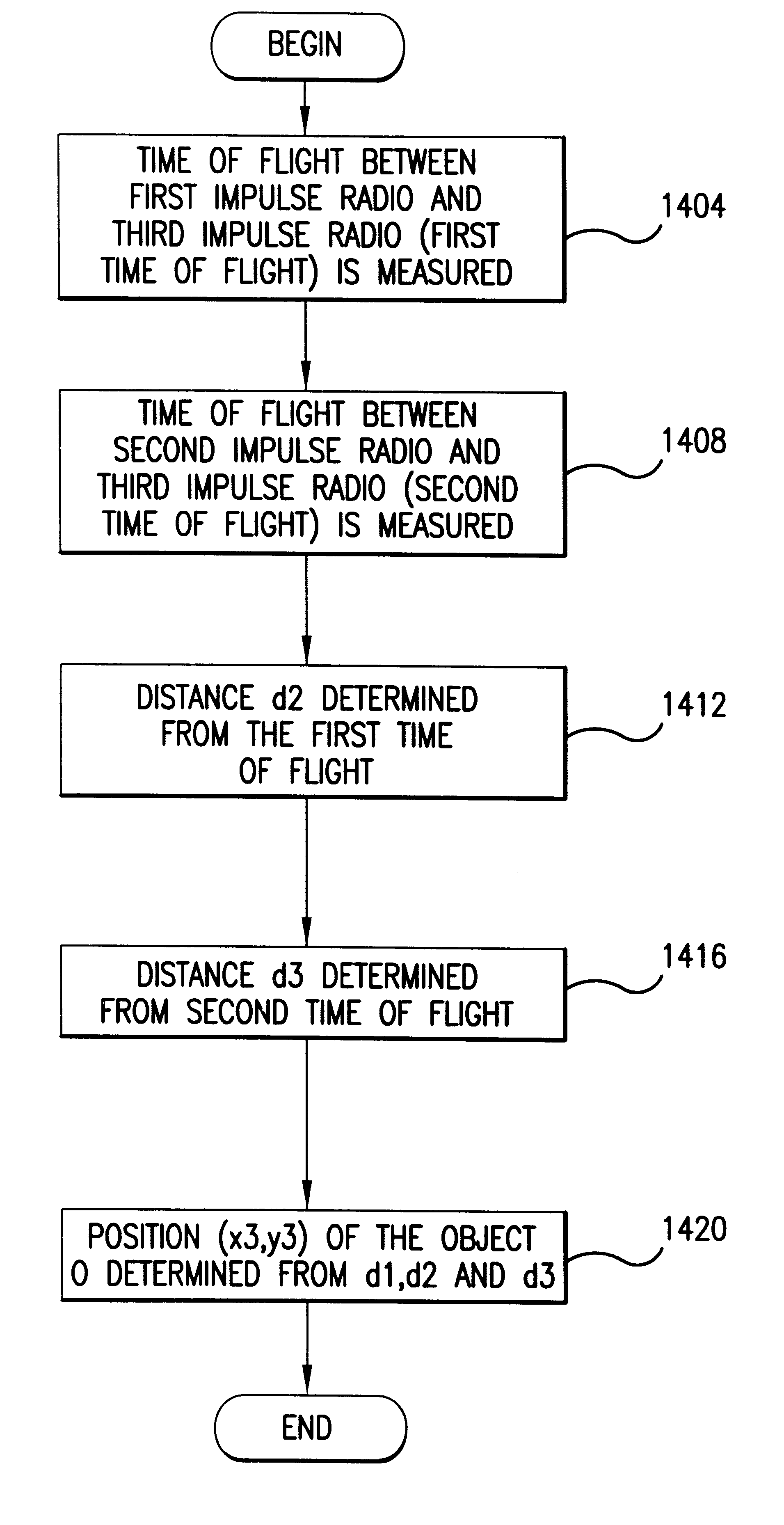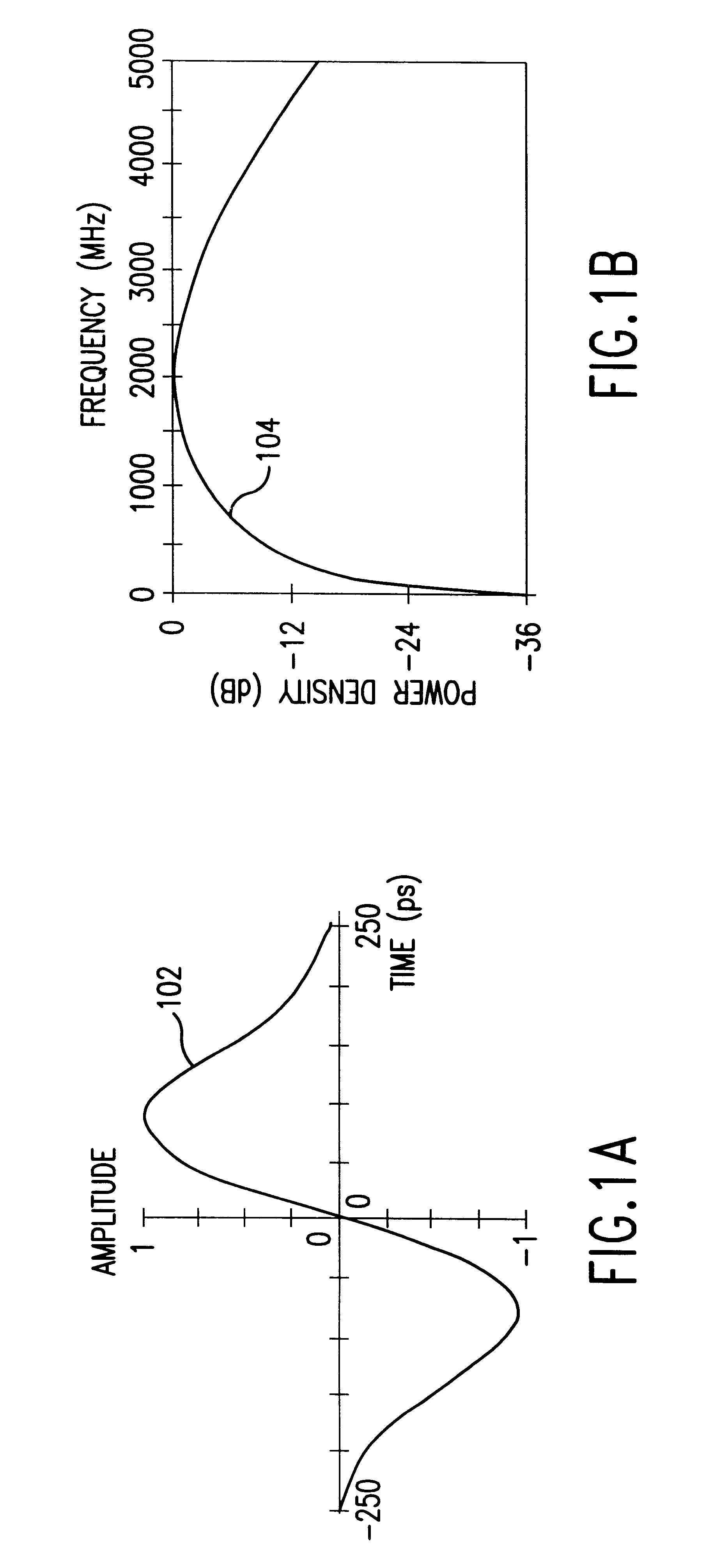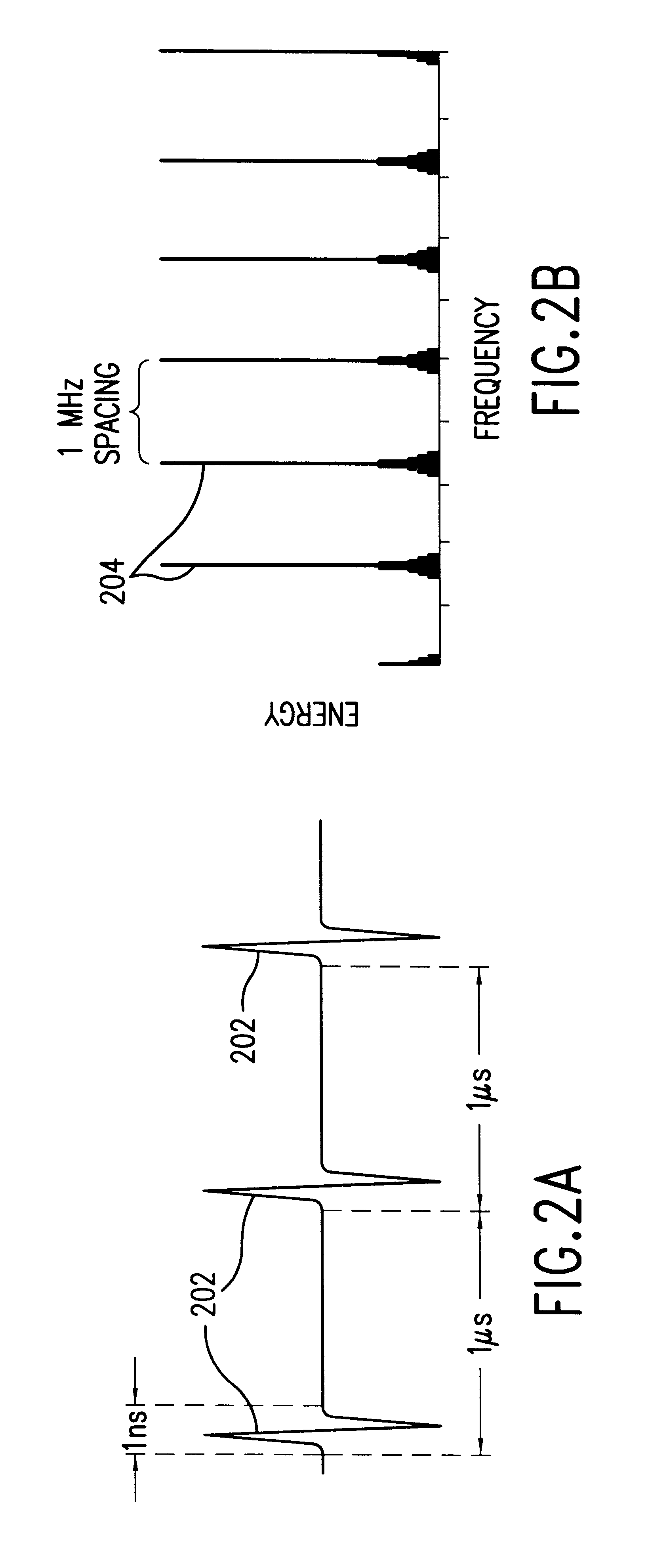System and method for position determination by impulse radio
a technology of impulse radio and position determination, applied in the field of position determination, can solve the problems of global positioning system, high-complex system of determining the position of objects, and waiting more than 100 minutes
- Summary
- Abstract
- Description
- Claims
- Application Information
AI Technical Summary
Problems solved by technology
Method used
Image
Examples
Embodiment Construction
Overview of the Invention
The present invention is directed to a system and a method for position determination using impulse radios. Impulse radio was first fully described in a series of patents, including U.S. Pat. Nos. 4,641,317 (issued Feb. 3, 1987), 4,813,057 (issued Mar. 14, 1989), 4,979,186 (issued Dec. 18, 1990) and 5,363,108 (issued Nov. 8,1994) to Larry W. Fullerton. A second generation of impulse radio patents include U.S. Pat. Nos. 5,677,927 (issued Oct. 14, 1997), 5,687,169 (issued Nov. 11, 1997) and co-pending Application Ser. No. 08 / 761,602 (filed Dec. 6, 1996) to Fullerton et al. These patent documents are incorporated herein by reference.
Prior to a detailed description of the present invention, a high level explanation of the invention is provided. According to one embodiment of the present invention, a first transceiver having a first clock providing a first reference signal is positioned. A second transceiver whose position is to be determined is placed spaced fro...
PUM
 Login to View More
Login to View More Abstract
Description
Claims
Application Information
 Login to View More
Login to View More - R&D
- Intellectual Property
- Life Sciences
- Materials
- Tech Scout
- Unparalleled Data Quality
- Higher Quality Content
- 60% Fewer Hallucinations
Browse by: Latest US Patents, China's latest patents, Technical Efficacy Thesaurus, Application Domain, Technology Topic, Popular Technical Reports.
© 2025 PatSnap. All rights reserved.Legal|Privacy policy|Modern Slavery Act Transparency Statement|Sitemap|About US| Contact US: help@patsnap.com



